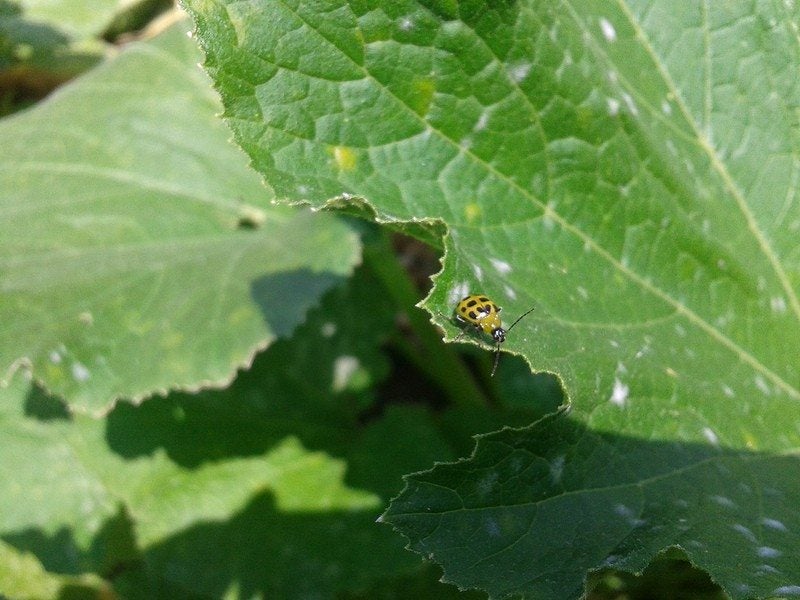Bacterial Wilt Of Cucumbers


If you're wondering why your cucumber plants are wilting, you might want to look around for bugs. The bacterium that causes wilt in cucumber plants usually overwinters in the belly of a specific beetle: the striped cucumber beetle. In the spring, when the plants are fresh, the beetles awaken and start feeding on baby cucumber plants. This spreads the bacteria either by mouth or through their feces, which they leave on the plants.
Once the beetle starts chewing on the plant, the bacteria enter the plant and multiply very quickly in the plant's vascular system. This starts producing blockages in the vascular system that causes cucumber wilt. Once the plant is infected, the beetles are even more attracted to the cucumber plants suffering from cucumber wilt.
Stopping Bacterial Cucumber Wilt
When you find your cucumber plants are wilting, investigate to see if you can find any of these beetles. The feeding isn't always obvious on the leaves you can see. Sometimes, the wilt will show up on the cucumber by flagging on individual leaves. Sometimes it's just one leaf, but it will quickly spread to the whole plant until you find several leaves on cucumber turning brown.
Once a plant has cucumber wilt, you'll find the cucumber leaves wilt and the cucumber plants dying early. This is no good because you won't yield any cucumbers on the infected plants. In order to prevent cucumber wilt, you need to know how to get rid of the beetles. Cucumbers that you harvest on cucumber plants dying early are usually not marketable.
One way to find out if you actually have bacterial cucumber wilt is to cut the stem and squeeze both ends. A sticky sap will ooze out of the cut. If you stick these ends back together and then pull them apart again, making a rope like connection between the two in the ooze, this means they have the bacteria. Unfortunately, once cucumbers have wilt there is no saving them. They will die.
When you find leaves on cucumber turning brown and your cucumber plants are wilting, control the bacterial wilt before it ruins your whole crop or next year's crop. As soon as seedlings come out of the ground in the spring, you'll want to start controlling the beetle. You can use products like Admire, Platinum or Sevin, which will provide you with control all growing season if applied frequently. Alternatively, you can use row cover cloth to keep the beetles off the plants so that they never have the chance to infect the plants.
Note: Any recommendations pertaining to the use of chemicals are for informational purposes only. Specific brand names or commercial products or services do not imply endorsement. Chemical control should only be used as a last resort, as organic approaches are safer and more environmentally friendly.
Gardening tips, videos, info and more delivered right to your inbox!
Sign up for the Gardening Know How newsletter today and receive a free copy of our e-book "How to Grow Delicious Tomatoes".

Kathee Mierzejewski was with Gardening Know How in the very beginning, writing many of the site's foundational articles.
-
 12 Lush Alternatives To A Lawn For Sustainable Spaces
12 Lush Alternatives To A Lawn For Sustainable SpacesAlternatives to a lawn are beautiful and also beneficial to your local ecosystem and its pollinators. Explore our top picks for plants to replace grass.
By Tonya Barnett
-
 Types Of Tomatoes Explained: Explore The Many Wonderful Shapes, Colors, Flavors, & Best Uses
Types Of Tomatoes Explained: Explore The Many Wonderful Shapes, Colors, Flavors, & Best UsesThe world of tomato varieties is vast and fascinating. Learn about the key types to grow in your garden, tailored to your preferences and space.
By Amy Grant